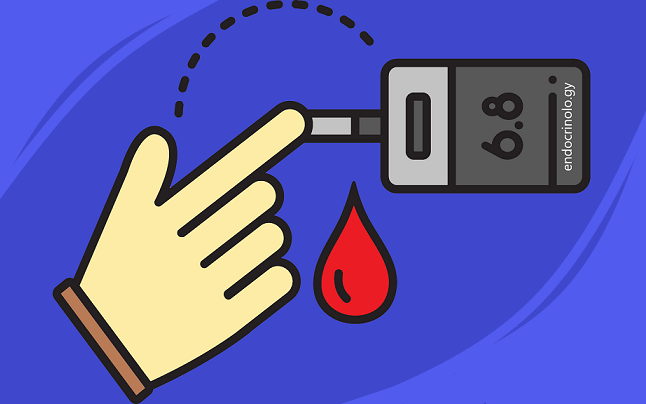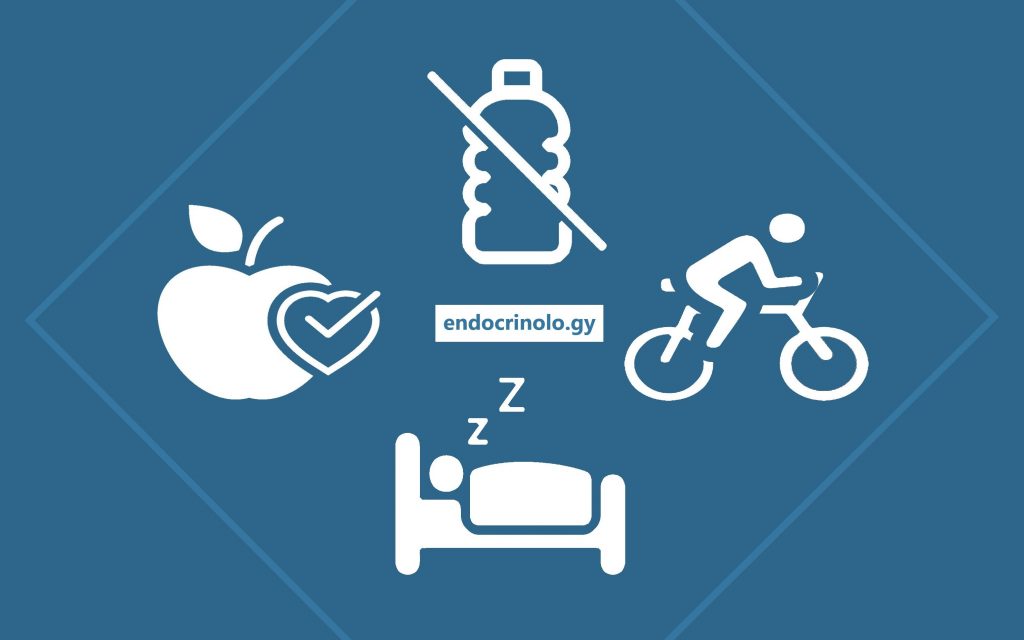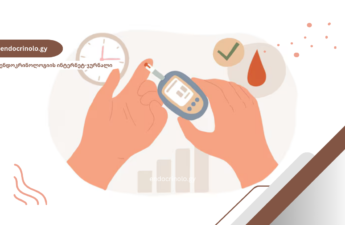The close link between tobacco use and serious conditions such as respiratory, cardiovascular, and oncological diseases is already well known to everyone.
At the same time, smoking has a multifaceted effect on the production of hormones and, therefore, on the functioning of the endocrine system as a whole, which often translates into significant clinical problems.
These effects are caused by direct exposure to nicotine, the toxin thiocyanate, and up to 7,000 other toxins contained in cigarettes.
Cigarette smoking negatively affects the functioning of the pituitary gland, thyroid gland, adrenal gland, testicles, and ovaries, calcium metabolism, and insulin action.
The most notable clinical results are:
- Increased risk and/or worsening of Graves' hyperthyroidism and associated orbitopathy
- Osteoporosis (impairment of bone structure and strength)
- Decreased ability to bear children
- Insulin resistance formation and Increased risk of type 2 diabetes
A significant problem is the impact of tobacco on the fetus and the inhalation of its smoke in children.
Due to the increased levels of catecholamines in pregnant women who smoke, adequate blood supply to the fetus may be impaired.
The entry of thiocyanates into the body as a result of passive smoking (inhaling tobacco smoke) may cause changes in the size and functioning of the thyroid gland.
Thyroid gland
Many studies show that tobacco has a multifaceted effect on the thyroid gland.
It acts on antibodies associated with the thyroid gland, as well as on hormones and the structure of the organ itself.
The impact of smoking on Graves' disease and its associated ocular manifestation (Graves' orbitopathy) has been well known, studied, and documented for many years.
Graves' disease, like its associated orbitopathy, is of autoimmune origin. The thousands of toxins contained in tobacco smoke exacerbate this autoimmune effect.
Non-smokers and former smokers have a greater chance of achieving remission of the disease with drug therapy than smokers.
The risk of developing Graves' eye changes is doubled in smokers.
If Graves' disease is treated with Radioactive iodine therapy, the risk of developing orbitopathy is now four times higher.
Additionally, these risks increase in direct proportion to the number of cigarettes smoked per day. However, once smoking is stopped, they rapidly decrease to the level of risks for non-smokers.
DIABETES MELLITUS
Smoking is considered one of the main risk factors for developing type 2 diabetes (along with unhealthy diet and a sedentary lifestyle).
Inflammatory processes and oxidative stress, which accompany exposure to toxic compounds contained in cigarettes, inhibit the proper functioning of the hormone insulin in the body and lead to the development of a state of insulin resistance.
It is through this mechanism that tobacco use increases the risk of developing type 2 diabetes by 30-40 times compared to non-smokers.
Here too, the level of risk increase is directly proportional to the number of cigarettes smoked during the day.
Also, as a result of increased insulin resistance, it is much more difficult for smokers to manage type 2 diabetes and achieve glycemic (blood sugar) targets.
Against the backdrop of an insulin therapy regimen, a significant increase in insulin doses is required to achieve the desired results.
It is well known that smoking attacks blood vessels and prevents the body from getting enough oxygen. When this is combined with high blood glucose, whose first target for damage is also the blood vessels, the results become dramatic.
Overall, both through indirect and direct effects, the risks of developing serious complications of diabetes increase, such as heart disease, arterial hypertension, kidney and eye damage, nervous system disorders, poor blood circulation, and the need for amputation.
Quitting tobacco use has an immediate positive impact on the body. Although it will not “reverse” diabetes, it will significantly improve its management and outcomes. The effects of insulin and other sugar-regulating drugs increase.
Lipids
უკვე აღვნიშნეთ მწეველობის უარყოფითი ზეგავლენა კარდიოვასკულარულ სტატუსზე და დაავადებებზე. ამ ეფექტის განმაპირობებელი ერთ-ერთი მექანიზმი არის სწორედ თამბაქოს ზემოქმედება ლიპიდურ ანუ ცხიმოვან ცვლაზე, რაც ლაბორატორიულად ლიპიდური სპექტრის პარამეტრების ცვლილებებში აისახება.
კერძოდ, თამბაქოს მოხმარება ასოცირებულია საერთო ქოლესტერინის რაოდენობის მატებასთან, დაბალი სიმკვრივის (კარგი) ლიპოპროტეიდის შემცველი ქოლესტერინის რაოდენობის შემცირებასთან და ტრიგლიცერიდების დონის მკვეთრ ზრდასთან, რასაც საერთო ჯამში კარდიოვასკულარული რისკების მატებამდე მივყავართ.
ოსტეოპოროზი
მწეველობა წარმოადგენს ოსტეოპოროზის მნიშვნელოვან მოდიფიცირებად რისკის ფაქტორს, რომლის თავიდან აცილებაც შესაძლებელია.
ოსტეოპოროზი არის ძვლის დაავადება, რომელიც ხასიათდება ძვლოვანი ქსოვილის სტრუქტურული ცვლილებებით, ძვლოვანი მასის შემცირებით და მოტეხილობების გაზრდილი რისკით.
როგორც სხვა შემთხვევებში, აქაც თამბაქოს მოხმარება რამდენიმე სხვადასხვა პირდაპირი თუ არაპირდაპირი ზემოქმედებით ავლენს ამ უარყოფით ეფექტს.
ესენია: ძვლოვანი ქსოვილის წარმოქმნის დაქვეითება, სასქესო და ადრენალურ ჰორმონებზე ზეგავლენა, კალციუმის შეწოვის დაქვეითება და სხვა მექანიზმები.
შედეგად კი ვიღებთ ისეთ დაზიანებებს, როგორიცაა ოსტეოპოროზი, მოტეხილობების რისკების ზრდა, ართრიტი, პერიოდონტიტი.
ცხადია, ამ შემთხვევაშიც რისკების მოხსნა თამბაქოს მოხმარების შეწყვეტაზე არის დამოკიდებული.
სხვა უარყოფითი ეფექტები
გარდა ზემოთ ჩამოთვლილი მდგომარეობებისა, თამბაქო მასში შემავალი ნიკოტინის და სხვა მავნე ნივთიერებების ზემოქმედებით ცვლის კორტიზოლის, პარათირეოიდული ჰორმონის, ესტროგენების, ტესტოსტერონის, ზრდის ჰორმონის გამომუშავებასაც.
ეფექტები და რისკები თითქმის იგივეა განგრძობითი პასიური მწეველობის შემთხვევაშიც.
რაც შეეხება ელექტრონულ სიგარეტებს, მათი ზემოქმედება ენდოკრინულ სისტემაზე ჯერჯერობით არ არის სრულყოფილად შესწავლილი. ნებისმიერ შემთხვევაში, საუკეთესო ვარიანტია, ის გამოყენებული იქნას დროებით, როგორც მწეველობის შეწყვეტის ერთ-ერთი დამხმარე საშუალება და საბოლოოდ შეწყდეს მისი მოხმარებაც.
რამდენიმე რჩევა თამბაქოზე მოთვნილების გადასალახად
მწეველთა უმრავლესობისთვის სიგარეტზე უარის თქმა დიდ სირთულეს წარმოადგენს. თუმცა, ამ მავნე დამოკიდებულების გადალახვა, რა თქმა უნდა, ყველას შეუძლია.
გახსოვდეთ, რომ რაც არ უნდა მძაფრი იყოს სიგარეტზე მოთხოვნილება, უმეტესად 5-10 წუთია საჭირო, რომ ის თავისთავად შემცირდეს.
ამიტომ, სიგარეტზე მოთხოვნილების გაჩენის დროს მთელი ძალისხმევით შეეცადეთ მომდევნო 10 წუთი ყურადღება გადაიტანოთ სხვა რამეზე, ვიდრე ძლიერი სურვილი გაივლის. ამისთვის ერთ-ერთი კარგი ვარიანტია აქტიური ფიზიკური დატვირთვა. მაგალითად, ბუქნები, ან კიბეზე არბენა-ჩამორბენა რამდენჯერმე, ან გარემო სიტუაციასთან მორგებული სხვა რომელიმე ვარჯიშის ან აქტივობის შესრულება.
პირის აპარატისთვის სიგარეტი შეიძლება ჩაანაცვლოთ საღეჭი რეზინით, მზესუმზირით, თხილეულით ან სხვა თქვენთვის სასიამოვნო ,,საცმაცუნო” პროდუქტით.
მოერიდეთ ისეთ გარემოს ან ქმედებებს, რომლებიც თქვენთვის მოწევასთან ასოცირდება.
არ მისცეთ თავს უფლება მოწიოთ ,,მხოლოდ ერთი ღერი”, როგორც წესი, ერთს დანარჩენებიც ადვილად მოჰყვება ხოლმე.
გამოიყენეთ სტრესის მოსახსნელი ტექნიკები, მაგალითად, ღრმად სუნთქვა, მასაჟი, იოგა, წყნარი მუსიკის მოსმენა.
სცადეთ სიგარეტის დროებით ჩანაცვლება ნიკოტინის შემცველი პროდუქტებით, რომლებიც ხელმისაწვდომია პლასტირის, საღეჭი რეზინის და სხვა ფორმით.
და ხშირად შეახსენეთ თქვენს თავს თამბაქოს მოხმარების შეწყვეტის დადებითი მხარეები, როგორიცაა:
- თვითშეგრძნების გაუმჯობესება
- ორგანიზმის გაჯანსაღება
- საყვარელი ადამიანების დაცვა მეორადი პასიური მწეველობისგან
- ფინანსური დანახარჯების შემცირება.
არ დანებდეთ! გახსოვდეთ, რომ ყოველ ჯერზე, როცა ხდება მოწევის სურვილის წარმატებით დაძლევა, თქვენ ერთი დიდი ნაბიჯით უახლოვდებით იმ მნიშვნელოვან მიზანს, რაც თამბაქოზე დამოკიდებულებისგან განთავისუფლებაა.
Author: Elga Giorgadze (MD of Endocrinology)






